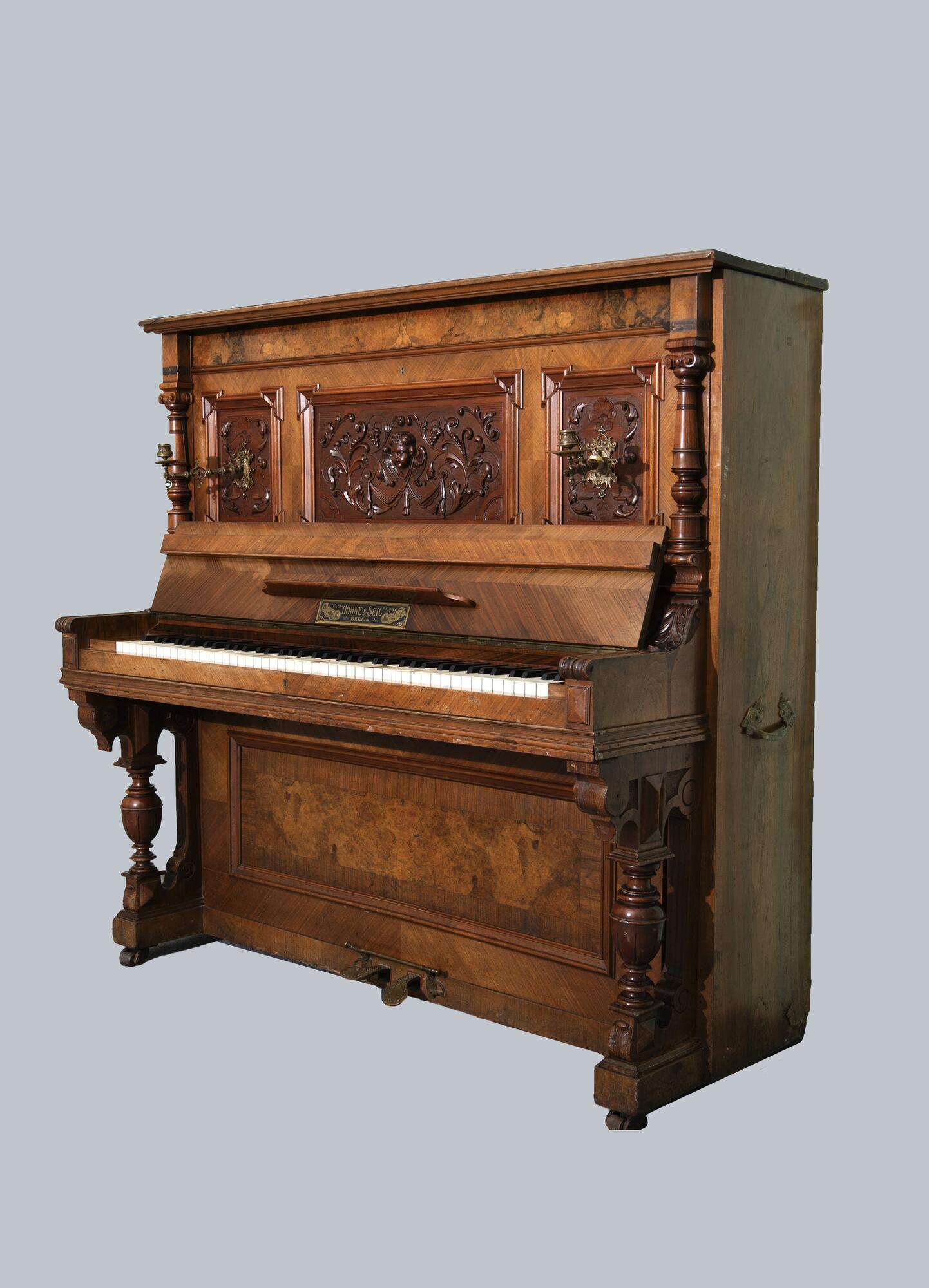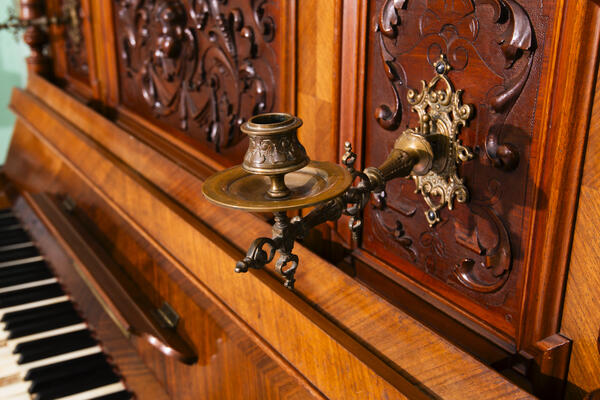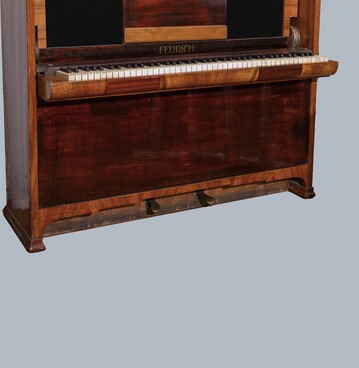In the 19thcentury, more people could afford a piano than before, and the instrument became widespread among not only the upper class but also the middle class.
After 1800, the musical instruments industry began to take shape in Austria, Germany, and England. The owners of large production enterprises started showing interest in manufacturing musical instruments. Advanced equipment allowed manufacturers to produce the tiniest details of complicated mechanisms with great precision.
The German company Höhne & Sell was founded in 1885, was registered in 1910, and manufactured pianos until 1930.
There were around 200 musical instrument manufacturers in Germany, many of which had closed by the early 1930s. The very strong competition between the factories forced them to look for unique designs and create instruments with distinctive features. New instruments were usually produced in small numbers — on average, around twelve pieces — because the manufacturers were afraid of being unable to sell them.
The case of this piano is made of walnut, the keys are covered with ivory. The front of the piano is decorated with bronze candlesticks placed to the left and right of the music rack. The panel with vegetal patterns is made using the technique of overlay carving; the central panel features a high relief with the head of a putti or cupid. Renaissance craftsmen borrowed such motifs from classical art, just like 19th-century furniture makers. The cast-iron sound board and copper-wound strings gave the instrument a more spatial sound.
At the turn of the 20thcentury, German factories often produced overstrung pianos. This instrument is no exception.
In overstrung pianos, the dampers which stop the strings from vibrating are located above the very end of the strings, with the hammers hidden in a box with a damping mechanism. Such instruments were rather difficult to tune because the tuner had to remove the wooden bar with the dampers. With nothing to prevent the strings from vibrating, it became extremely difficult to “catch” a perfect pitch.
It is for this reason that overstrung pianos are
almost never used in rehearsals and concerts nowadays. They are valuable only as
antique instruments with a peculiar design and unique appearance.




